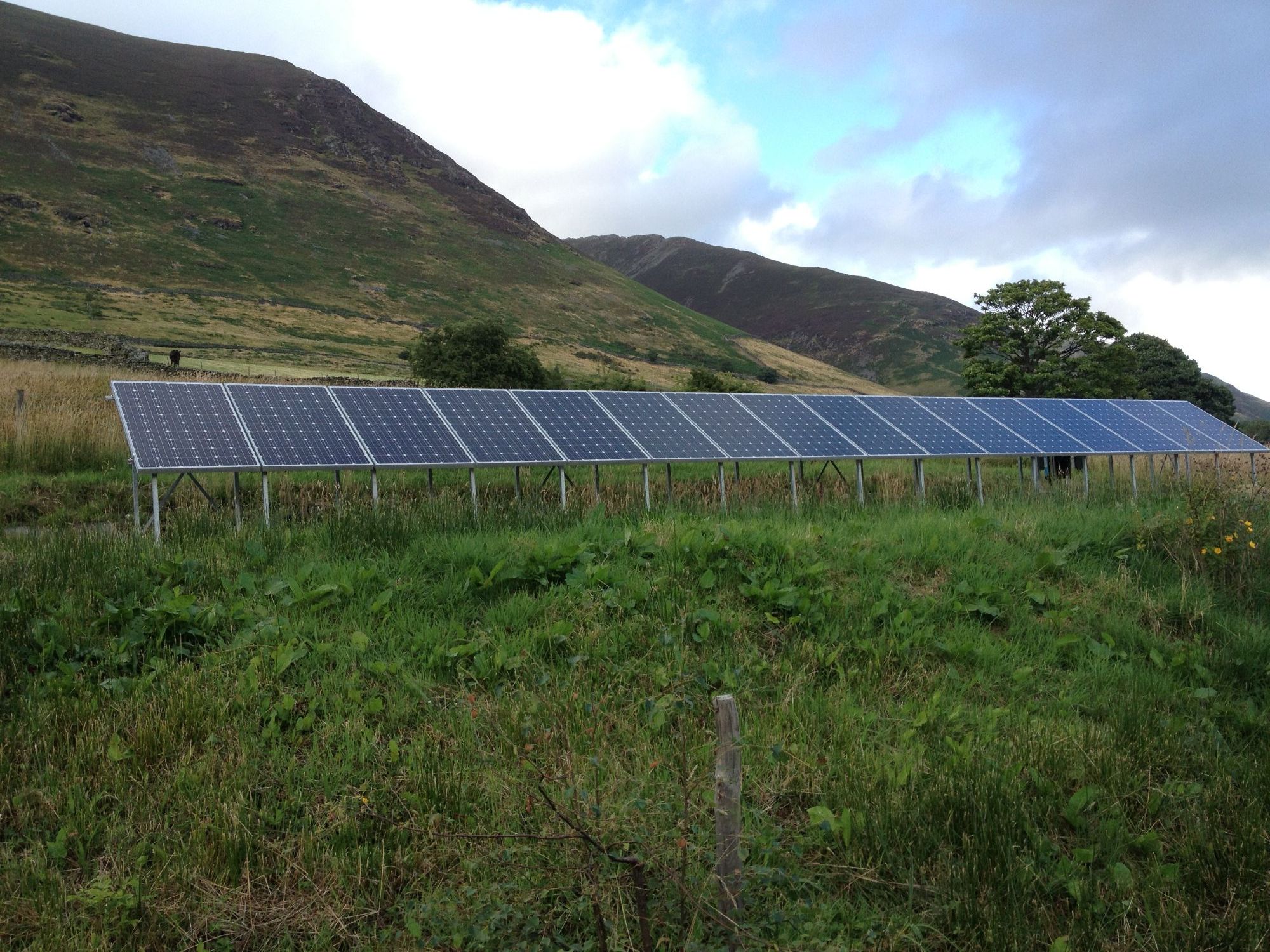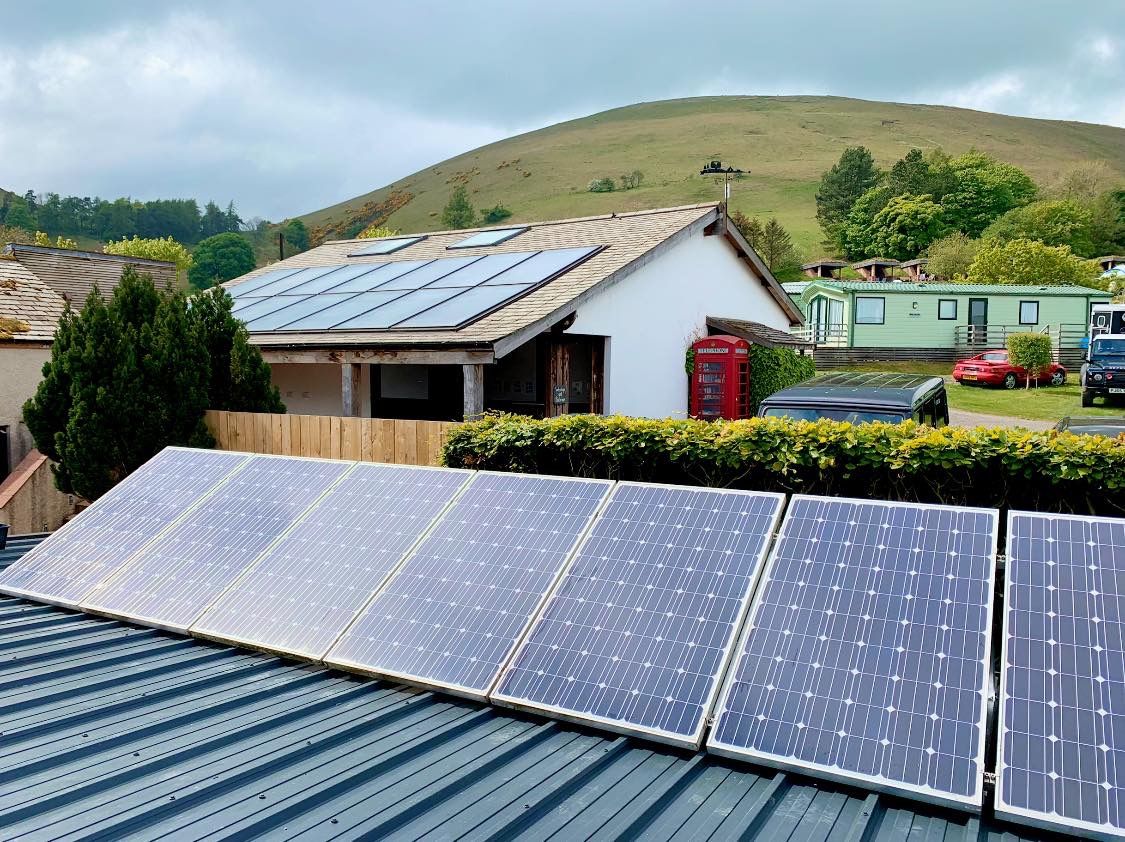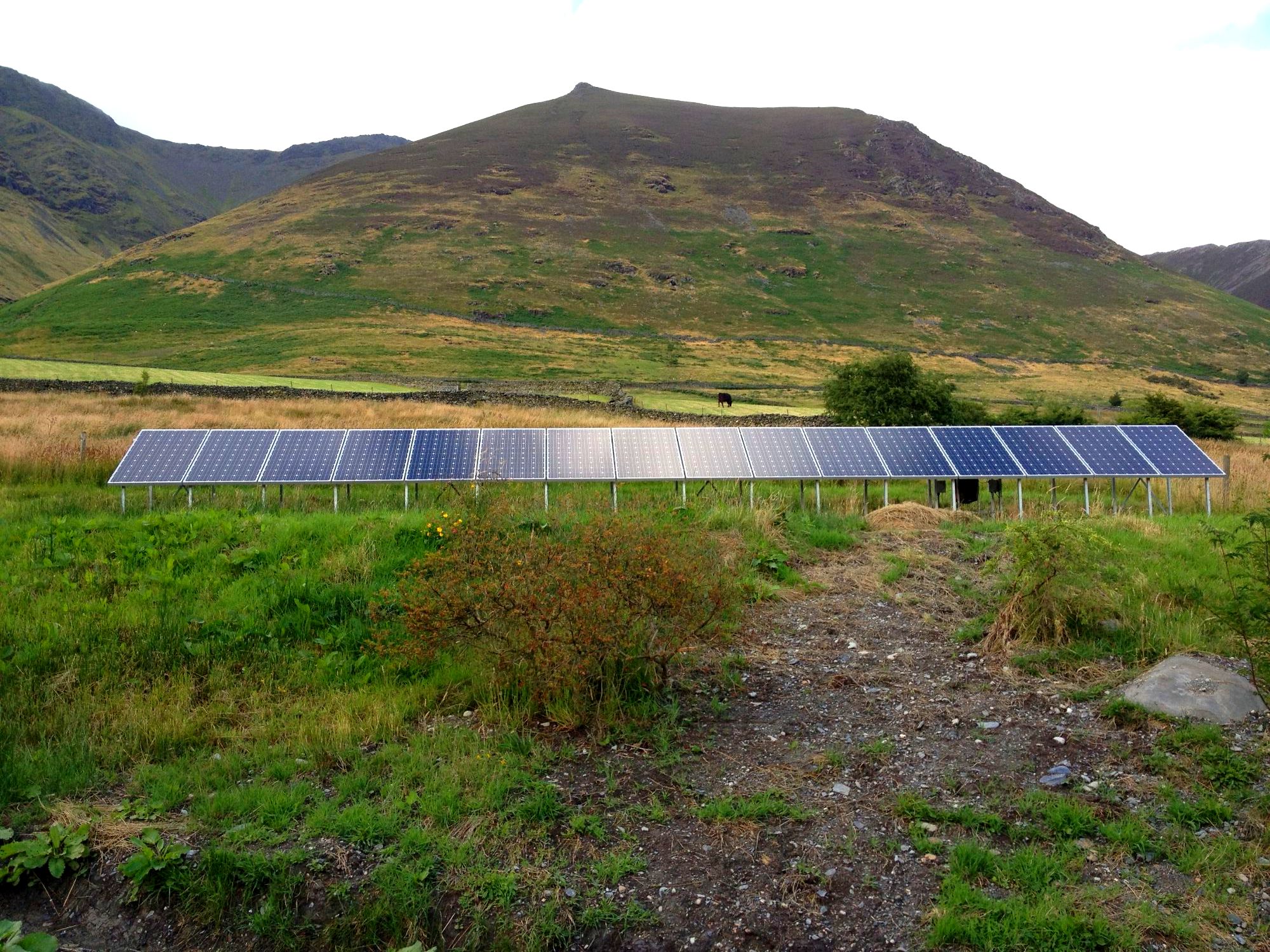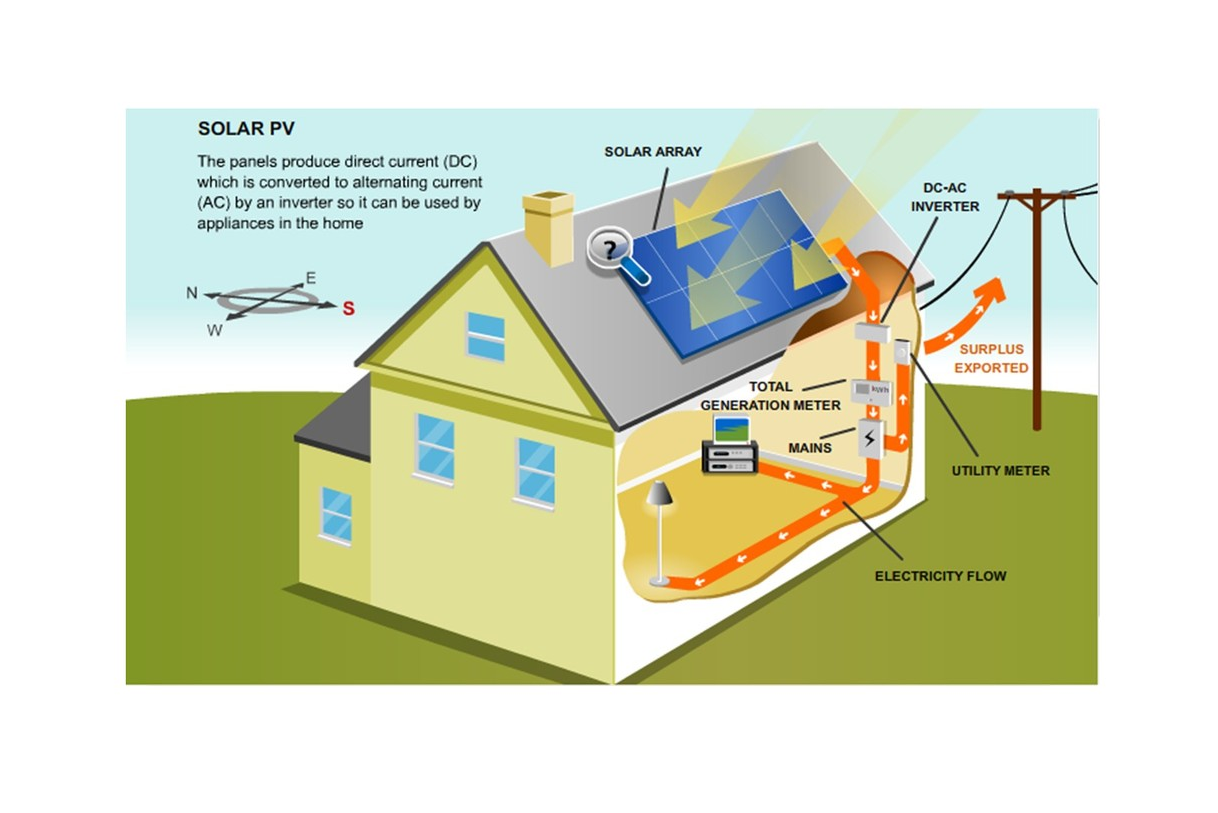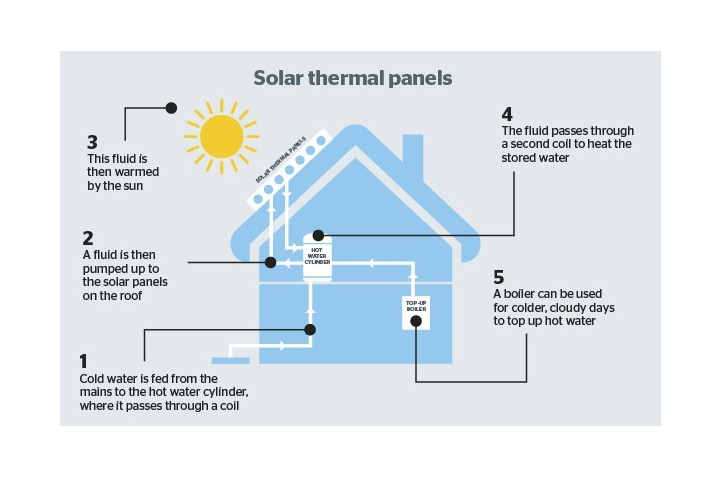Solar Photovoltaic (PV)
Solar Photovoltaics (PV) is the field of technology related to the application of solar cells for energy by converting solar energy directly into electricity. Due to the growing demand for renewable sources of energy, the manufacture of solar cells and photovoltaic arrays has expanded dramatically in recent years.
Solar Photovoltaic modules absorb and convert sunlight into electricity. They don’t need direct sunlight to work – they can still generate some electricity on a cloudy day. Solar PV modules are supplied as a sealed unit with a specific voltage and wattage rating. In order to provide electricity for a building Solar PV modules have to be combined in a system with other components (including an inverter, wiring and roof mounting kit). PV cells come in a variety of shapes and sizes. Most PV systems are made up of panels that fit on top of an existing roof, but you can also fit solar tiles.
Thermatech install both in-roof and on-roof PV systems. Photovoltaic panels can be installed in conjunction with other renewable technologies to reduce the power consumption required.
Benefits of Solar PV
- Reduce your electricity bills.
- Store excess electricity.
- Cut your carbon footprint.
- Low maintenance.
- Invest in the future and reduce your reliance on the National Grid.
- Can be installed as part of a new system using the BUS grant.
How Does Solar Photovoltaic Work?
PV modules contain photovoltaic cells; semiconductor devices that convert sunlight directly into electricity. Most PV systems installed in the UK are grid connected, which means that the output is fed directly into a building’s existing mains supply. On clear days the power generated by the PV system reduces the amount of electricity that needs to be purchased from the local electricity supplier. If electricity production is greater than the demand in the building, the excess will be exported out into the grid, or into another renewable system in your home.
The system consists of: an array of PV panels; an inverter (an electronic device that converts the output of the solar array from DC to AC), cables, controls & switchgear.
Solar Thermal
Solar Thermal water heating systems work by absorbing solar energy. The energy is transferred from the solar panel to heat the water in your hot water cylinder. Highly efficient, completely controllable and low maintenance, a solar water heating system is easiest to install if you already have a conventional ‘system’ or ‘regular’ boiler and could provide a large percentage of your annual hot water from a clean, renewable source of energy.
When a solar hot water system and central heating hot water system are used in conjunction, they can be installed in 2 different ways:
- Use a pre-heater cylinder that then feeds the central heating hot-water cylinder. This will allow for greater efficiency throughout the year and during the winter, will reduce the amount of heat your boiler/GSHP etc will have to produce to raise your hot water to a good temperature.
- Install a twin coil cylinder with a lower coil for the solar hot water and the upper coil for the central heating hot water. This is often an option if there is a lack of space for two cylinders. However, this option will not give the efficiency savings of the two cylinder system during the winter months.
The main need for central heating is at night when there is no sunlight and in winter when solar gain is lower. Therefore, solar water heating for washing and bathing is often a better application than central heating because supply and demand are better matched.
Thermatech can install both in-roof and on-roof solar systems in a variety of formats and sizes to suit each situation and customer requirements.
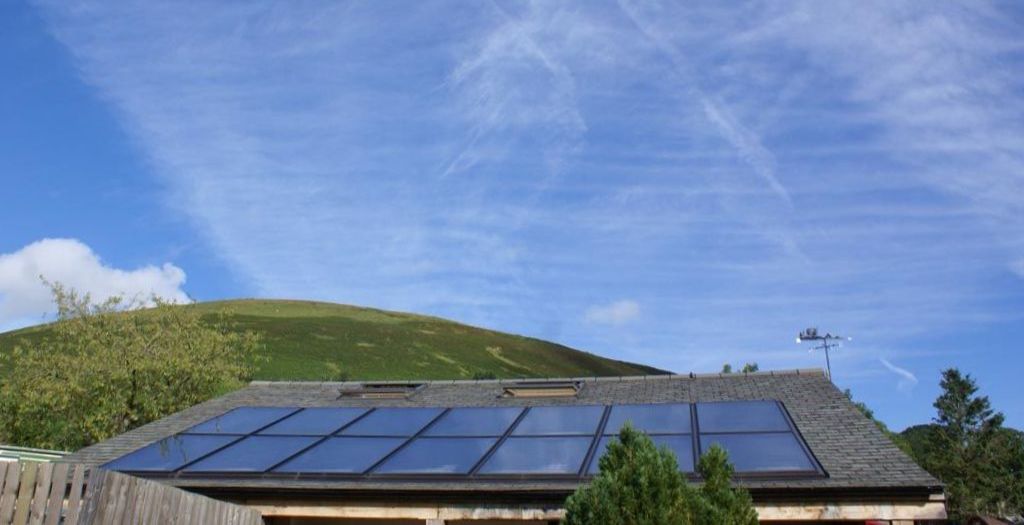
Benefits of Solar Thermal
- Reduce your electricity bills.
- Cut your carbon footprint.
- Can be installed as part of a new system using the BUS grant.
- Low maintenance.
How Does Solar Thermal Work?
In order to heat water using solar energy, a collector is fastened to the roof of a building, or on a wall facing the sun. In some cases, the collector may be free-standing. The working fluid is either pumped (active system) or driven by natural convection (passive system) through it.
A simple water heating system would pump cold water out to a collector to be heated, the heated water flows back to a collection tank. This type of collector can provide enough hot water for an entire family.
